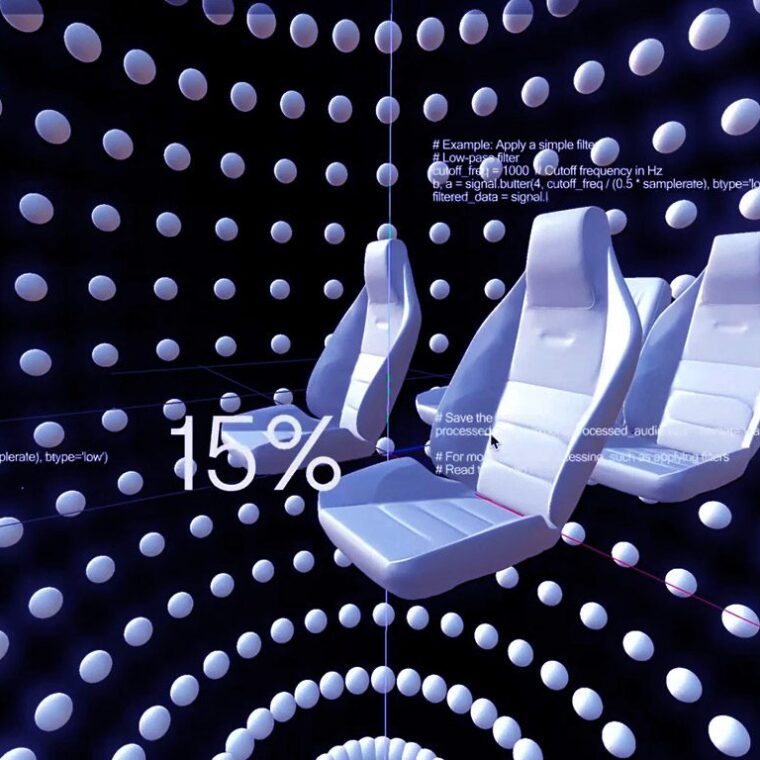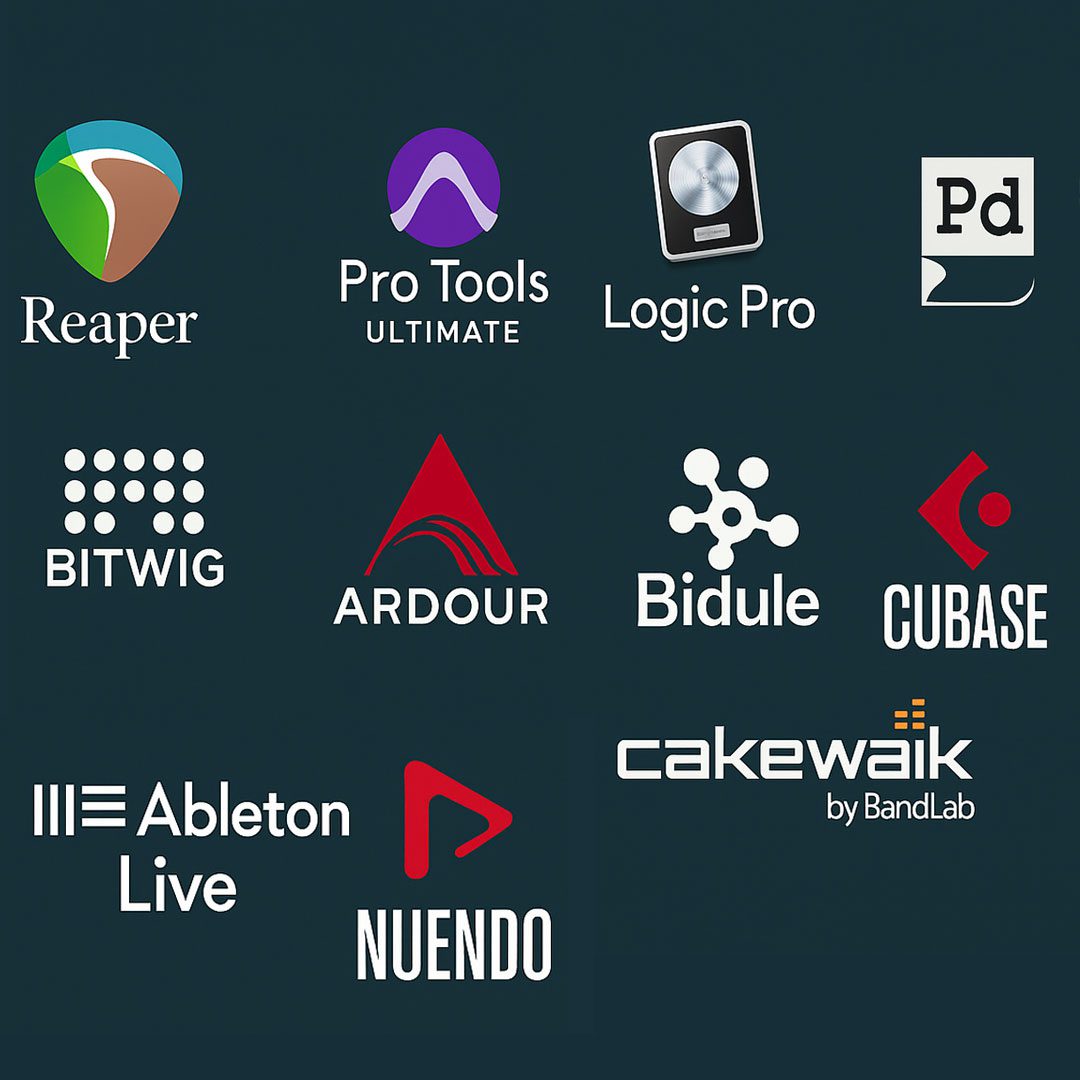The Third Acoustic Space
The car cabin is no longer just a means of transportation: it is a third acoustic space, an environment with its own value for high-fidelity sound experiences, distinct from the home and the workplace. Inspired by Ray Oldenburg’s concept of the Third Place, the vehicle functions as a temporary refuge—an intimate space where users consume content, listen to music, or make calls without external interference.
Individual trips usually last between 30 and 45 minutes at minimum, and daily commutes can exceed three hours in dense urban areas. This temporal extension consolidates the cabin as a personal space.
Electrification, by radically reducing engine noise, opens up new listening possibilities. Combined with Active Noise Cancellation (ANC) and advanced DSP technologies, it allows the creation of highly controlled sound environments. Each occupant can integrate their devices and streaming services as if carrying a portable studio on the move.
Leading automotive brands today conceive the cabin as an autonomous acoustic and narrative environment, where each user is a captive audience. Spatial audio technologies developed by companies such as Dolby, Sony, Fraunhofer, and Dirac—capable of reproducing three-dimensional sound and controlling source localization—are transforming vehicle design and user experience. This change is significant: it redefines acoustic engineering and the professional future of audio engineers, sound designers, and sound artists, who are called to integrate acoustics, control, comfort, functionality, and safety within a single ecosystem.
With the arrival of autonomous vehicles, the cabin is envisioned as a digital entertainment hub where gaming, streaming, and media consumption converge. In this scenario, sound design ceases to be an accessory and becomes a strategic component of the travel experience.
For decades, the automotive industry focused on NVH (Noise, Vibration, Harshness): reducing noise, vibrations, and harshness to improve comfort. Today, the paradigm has shifted. It is no longer just about suppressing sound, but about designing it: creating a space where the ear takes center stage and the car becomes an immersive environment with its own acoustic language.
Immersive Automotive Audio Ecosystem
Immersive audio is advancing in the automotive industry from the luxury and electric vehicle segments, where it already functions as a new symbol of technological status. Its adoption does not depend solely on speakers or software: it involves an interdependent network of manufacturers, DSP companies, acoustic calibrators, infotainment developers, and streaming platforms.
The leading names in this new market are Lucid Motors, Mercedes-Benz, and Cadillac, each demonstrating a distinct strategy.
The Lucid Air, with its Surreal Sound Pro system and a 21-speaker architecture, highlights Dolby Atmos as its main technological flagship, delivering an immersive performance that complements the luxury of its models, with prices ranging from USD 77,400 to 169,000.
Mercedes-Benz, on the other hand, fully integrates immersive sound: Dolby Atmos is not an optional add-on, but a native part of the MBUX system in models such as the EQS, S-Class, and EQE. This integration optimizes spatial audio processing according to each cabin’s acoustics, making sound a central element of design and brand identity.
Cadillac focuses on the emotional experience: its new electric vehicles, such as the 2025 OPTIQ and 2026 Escalade, use 7.1.4 configurations, with seven surround speakers, a subwoofer, and four height channels, offering a three-dimensional sound experience that the brand describes as “a private concert on wheels.”
Behind the marketing, the integration of immersive audio presents a strategic challenge that shapes its adoption. Each manufacturer performs multichannel processing natively within its own operating system—MBUX in Mercedes, GM’s infotainment, proprietary software in Lucid—giving them full control over the signal path. This approach distinguishes automotive immersive audio from external solutions like CarPlay or Android Auto: internal processing ensures spatial coherence and tonal fidelity, turning the cabin into a sound environment designed from engineering, not from the device.
The automotive immersive audio ecosystem is structured in several interdependent layers:
At the core are the manufacturers (OEMs), who define the brand’s strategy and sonic identity.
In the second layer operate the audio technology providers—Dolby, Dirac, Fraunhofer, Sony 360 Reality Audio, Sennheiser Mobility, Arkamys, Harman, and Bang & Olufsen—responsible for spatialization algorithms, speaker calibration, and dynamic zone control.
Tier 1 suppliers, including Faurecia Clarion Electronics, Pioneer, and Panasonic Automotive, physically integrate the systems, optimizing speaker placement, frequency response, and resonance cancellation.
Finally, streaming platforms—Apple Music, Tidal, Amazon Music, Spotify—provide immersive catalogs, adjusting encoding and metadata to meet each manufacturer’s requirements.
Within this framework, Mercedes-Benz maintains its leadership thanks to its partnership with Apple Music, becoming the first brand to offer spatial audio with Dolby Atmos natively outside the Apple ecosystem. The Burmester 4D and 3D systems, integrated into MBUX, are featured in ultra-luxury models such as the Maybach, EQS, EQE, and S-Class, with over-the-air updates ensuring compatibility with the latest standards. Since December 2023, the E-Class and CLE Coupé models with third-generation MBUX include Amazon Music in Dolby Atmos, expanding the offering to three-dimensional catalogs of music, podcasts, and audiobooks.
General Motors, in contrast, applies a hybrid monetization model. In Cadillac, access to Dolby Atmos requires a dual subscription: one to the OnStar® connectivity service—Core plans for eight years and One plans for three—and another to a compatible streaming service, such as Amazon Music or Tidal, with premium plans starting at USD 34.99 per month. This approach allows GM to control the after-sales experience and generate recurring revenue tied to audio consumption.
At the same time, new players are reshaping the automotive acoustic landscape. Lucid Motors stands out with its Surreal Sound Pro system; Hyundai Motor Group integrates Dolby Atmos in the 2024 Genesis line; and Rivian implements it in its R1 Premium Audio. Additionally, companies such as Sennheiser Mobility collaborate with manufacturers to develop specific experiences—for example, those created for CUPRA using Ambeo Mobility technology—while Dirac brings acoustic control systems comparable to professional studio “control rooms” into the vehicle interior.
This ecosystem of alliances—Mercedes with Apple Music, Cadillac with Amazon/Tidal, Lucid with Spotify/Tidal—reflects a fragmented yet strategically controlled model, where immersive audio becomes a territory for brand differentiation and positioning. Instead of global standardization, each manufacturer develops its own sonic language, its own listening environment, and its own acoustic narrative.
Consequently, the type of vehicle a user chooses no longer merely determines how they travel, but also the soundscape to which they belong. Each brand designs its own acoustic universe, controlling everything from sound architecture to the content access platforms.
This convergence of mobility, entertainment, and loyalty algorithms transforms listening into a form of identity-driven consumption: sound ceases to be a free medium and becomes a curated, coded experience within the boundaries set by each manufacturer. In this way, the car not only offers an immersive experience but also establishes a new listening economy, where hearing is privatized, subscription-based, and managed as part of the corporate ecosystem of connected mobility.
Implications
For us—producers, engineers, and sound designers—immersive audio in the automotive industry presents a complex scenario. On one hand, it offers unprecedented technical and narrative possibilities: precise spatialization, personalized mixing, and immersive experiences in controlled environments. On the other hand, it confronts us with a fragmented and closed market, where access to the audience depends on manufacturers, subscriptions, and proprietary platforms. Sound ceases to be a space for free experimentation and becomes a curated product, regulated by corporate interests.
Rethinking immersive audio from our practice requires going beyond technique and narrative: it demands analyzing how sound consumption and distribution models are structured. Creative and professional autonomy is at stake in an ecosystem that segments, encodes, and monetizes every sonic experience.
If the automotive industry will define the direction of audio over the next five years, this represents both a challenge and an opportunity: to explore new tools, formats, and immersive content, and to actively position ourselves so that corporate rules do not dictate what is heard and how sound is experienced. Our responsibility as creators, technicians, and engineers is to question, innovate, and consciously decide how to intervene in an increasingly structured and controlled auditory environment.
This requires two key strategies.
First, acquire a broad understanding of immersive possibilities without relying on dominant brands like Dolby, which currently control a large part of the market, including open-source resources and emerging platforms, and actively promote these alternatives.
Second, apply techniques and formats from new market players, not just the established ones, to avoid being constrained by a dominant model that limits creativity and turns immersive audio into an elitist luxury. Our goal should be to broaden access, preserve professional autonomy, and ensure that sound remains a space for experimentation and relevance for diverse audiences.


